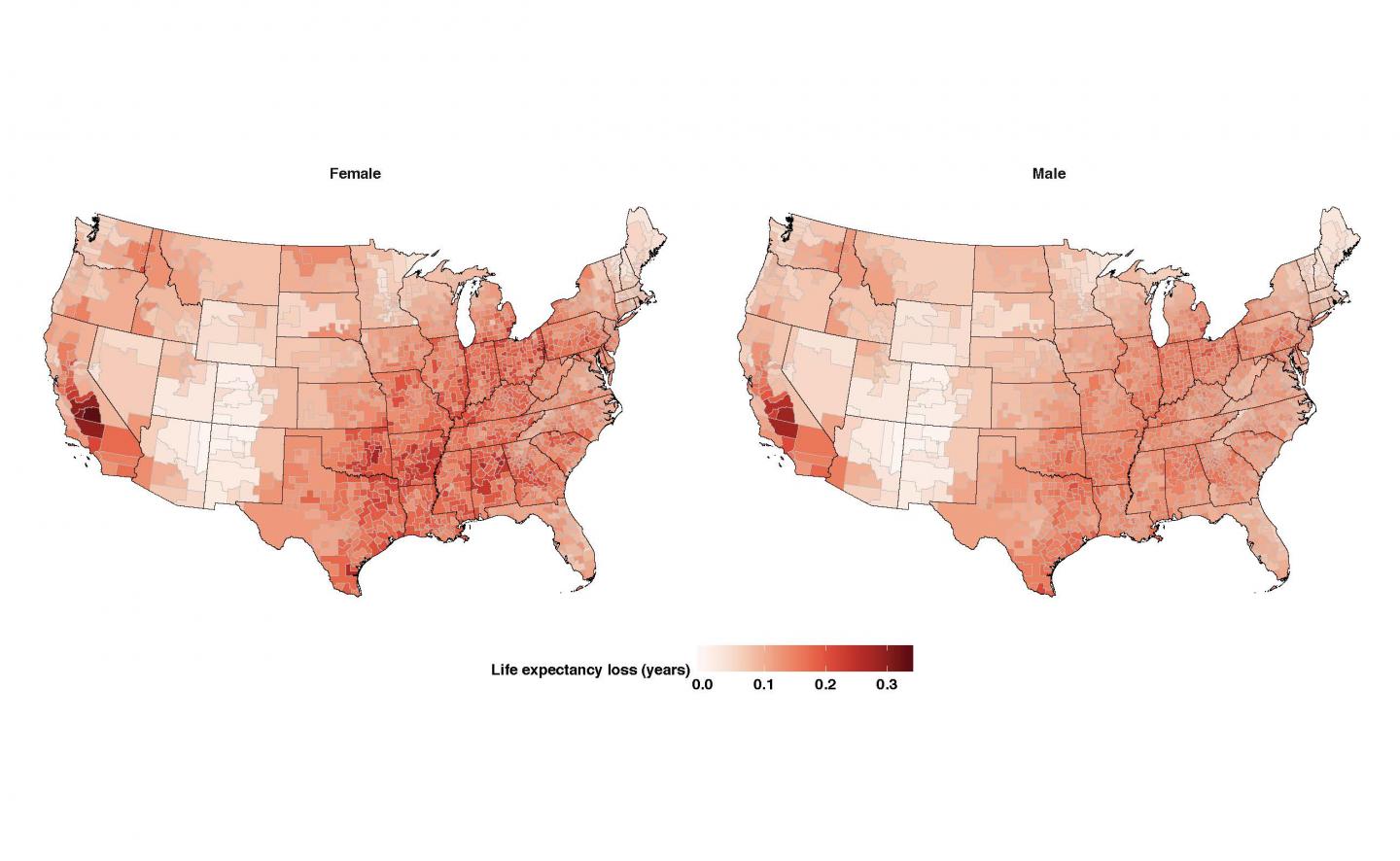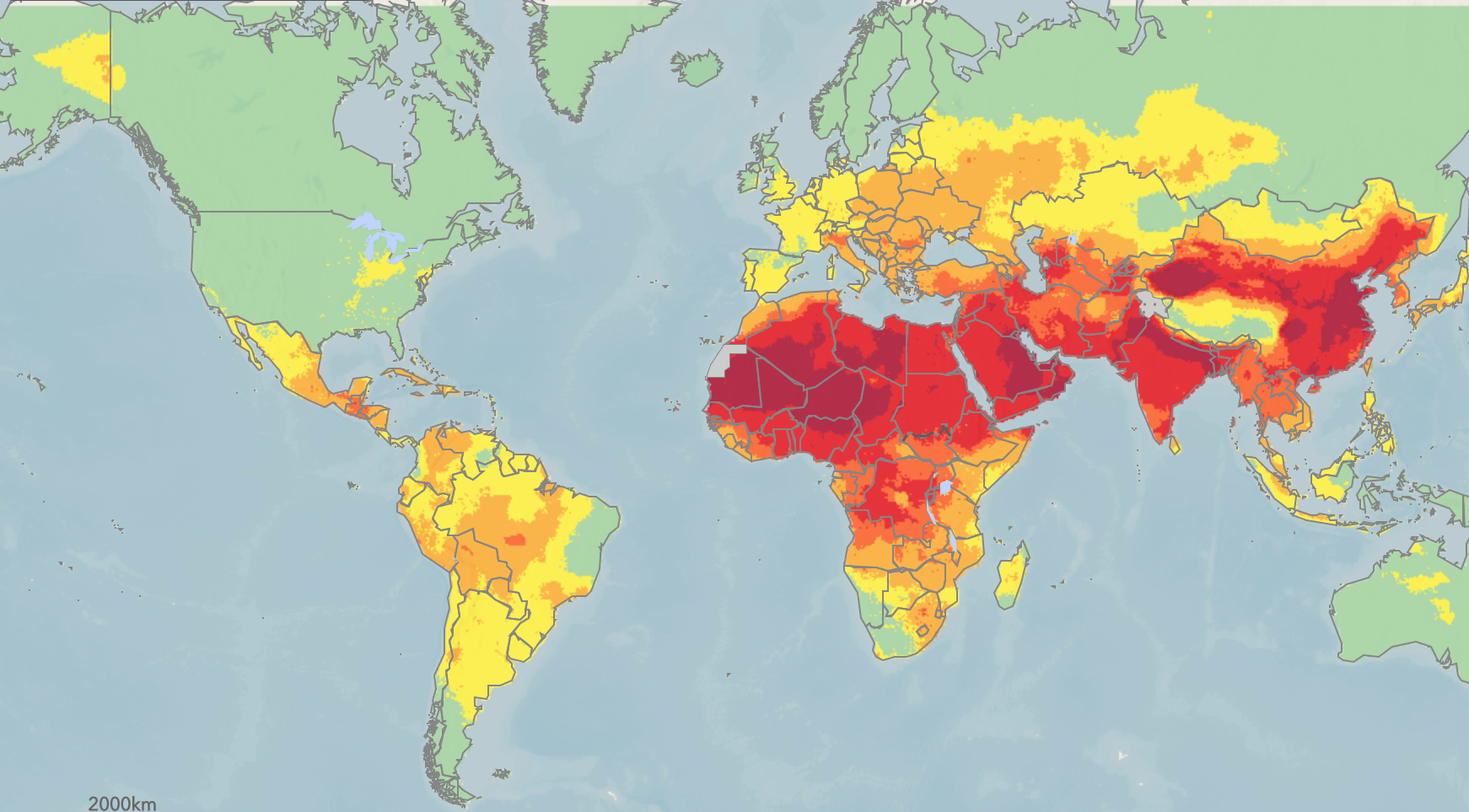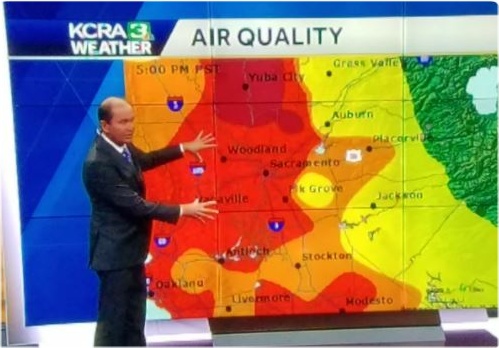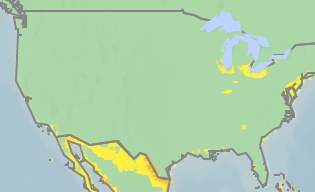Data didn't show it, but it doesn't matter and that is the great thing about modern epidemiology. In this decade, epidemiologists only need to show a statistical correlation and then they get media coverage and hand it off to scientists and tell them to prove it. It's sort of like theoretical physicists claiming they can show time travel or a multiverse and the incompetent noobs in experimental physics need to drop everything and prove them right.
That is what happened in a the EPA during the last administration. Despite numerous other studies showing PM2.5 is not killing anyone(2), and that America actually has great air quality, regulatory creep set in, and soon enough it got so much funding that even more epidemiologists jumped in hoping to get media attention claiming the same thing.
That happened again today. The Center for Air Quality, Climate, and Energy Solutions (CACES) at Carnegie Mellon University chose an easy route for the newest statistical massage; Environmental Health Perspectives, the default outlet for chemical scaremongering, published with taxpayer money by the Ramazzini Institute friendly National Institute of Environmental Health Sciences, a group of government epidemiologists determined to link everything to cancer.
The authors used public data from 28 years of National Health Interview Surveys and mapped that to the National Death Index to create a cohort of 1.6 million American adults. 1.6 million is a lot and since the data are public they claim this will increase replication, and it will, but replication alone does not make for scientific validity. In physics modeling, my previous career, it was always possible to converge on the completely wrong answer with outstanding accuracy. It could be right on the computer, but fail in the real world. And the real world is the confounder the authors ignore. These are self-reported claims about health which they then matched to air quality and deaths. Using their method, they can claim that even more restrictions in California have led to 0.3 years of longevity, while ignoring that during that same time frame longevity among all Americans has increased.

The colors above are chosen intentionally, it is a common statistical trick, and it is no shock the head of CASES Is a mechanical engineer. In mechanical engineering to make it easy to visualize a range in small effects, a Von Mises scale or something, a range of colors are used even for minor blips. Yet that is for visualization, it is not the data itself. In the private sector, engineers are not out to fool themselves or journalists. Here the range is 0 to 3 months, a range so small when it comes to longevity that it has no validity, but they still use scary earth tones hoping it will entice journalists into claiming air quality is in crisis.
If the range was over a lifetime, it would all be green. And if their data used actual pollution rather than the statistically manufactured kind, it would be almost all green. If epidemiologists use PM1 the whole country is blood red. Yet it's the exact same very clean air.
But let's look at actual PM2.5 in the U.S., even though we know it isn't killing anyone.

Source: WHO
Developed countries are fantastic. Since PM2.5 is this green, then PM10, the actual smog that kills people, is nothing. This is a public health win.
So why are groups trotting out more papers claiming we are in peril?
That is a psychological mystery, but certainly there is self-selection happening. If you do not cater to the doomsday crowd, you are never getting a job at the NIEHS or Harvard School of Public Health or any of the other prominent statistical outlets. Publishing new papers claiming some new next thing is killing us all are how they stay in business.
This new paper accomplishes something important for activists, including entrenched activists with generous government funding like Ivan Rusyn(3) - it defuses rebuttals by biologists, credible toxicologists, and ideologically neutral epidemiologists who have repeatedly shown that prior studies were bogus by claiming lives would be saved, because tens of thousands of people did not suddenly stop dying. By creating a fuzzy metric for months gained they can still invoke voodoo correlations but not be criticized when no dead bodies can be linked to the older standards.
Pollution is still a problem in countries like China and India, but like America and England in the 1950s that is smog - PM10 - a known killer. Lacking such real pollution, meteorologists love to throw up maps of PM2.5 because nearly any community can at least be yellow on a hot day.

The whole map above would be green with yellow around the actual fire raging in northern California. Yet this scaremongering graphic caused a run on surgical masks in Sacramento, even though those do not prevent PM2.5 particles from getting into lungs.
If you use actual pollution our air quality maps would be green, except some spots where heavy industry still occurs, where severe asthmatics will be uncomfortable.

We don't need to worry about PM2.5 because evolution gave us lungs that elegantly remove small particulate matter. That's why smoking is bad, and actual smog is bad, but the smell of bacon does not kill you.
Pollution is no longer a chronic issue in the United States but it keeps being used as a term because it gets an emotional response. When we show people data and say it is air pollution, they are concerned and want more done to fix. When we show them the same data and refer to it as air quality, they believe America is doing well. It is all framing, and that never saves lives, but is gives Environmental Health Perspectives a way to keep the public on red alert.
NOTES:
(1) Dockery et al. 1993 - and they still don't have the data.
(2) Heck, during the 2008 California wildfires, in the hands if the right epidemiologist we could have gotten a paper showing PM2.5 saved lives. Look at what happened to mortality as small micron particulate matter show up:
We'd have made fun of that claim the same way.
(3) Rusyn has annoyed other government insiders by furiously lobbying for the top job at NIEHS now that Dr. Linda Birnbaum has announced her departure. It's hard to imagine a member of the Ramazzini Institute like Birnbaum could be topped when it comes to embracing chemophobic woo but Rusyn colludes with EDF, IARC, NRDC, and anyone else who suggests weedkillers or other trace chemicals must be banned. He's probably a shoo-in.




Comments